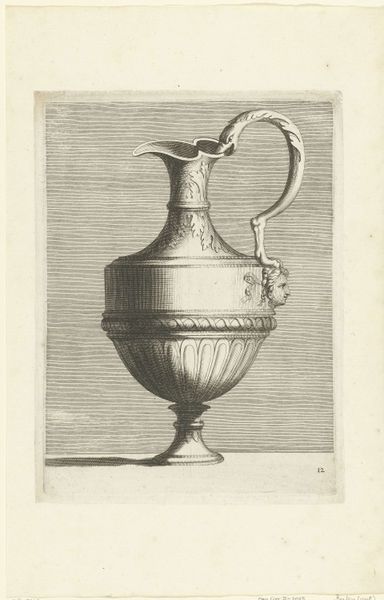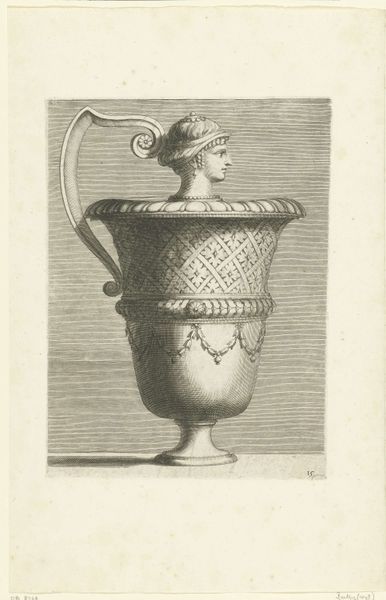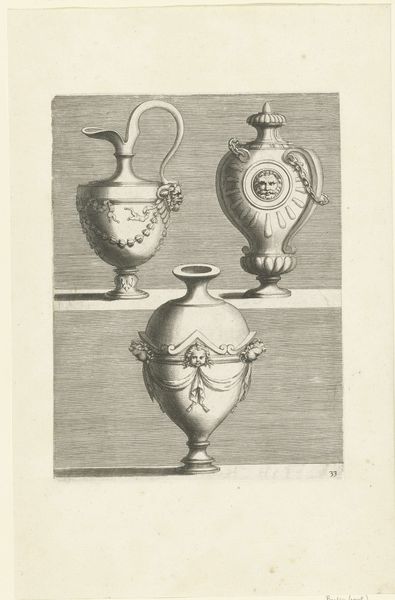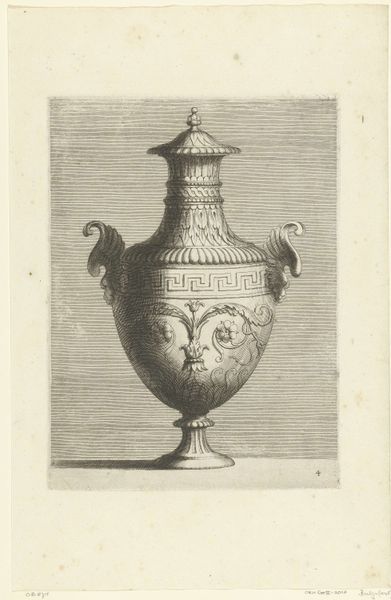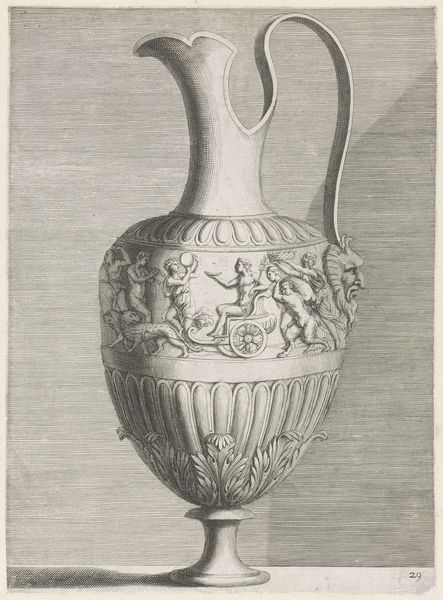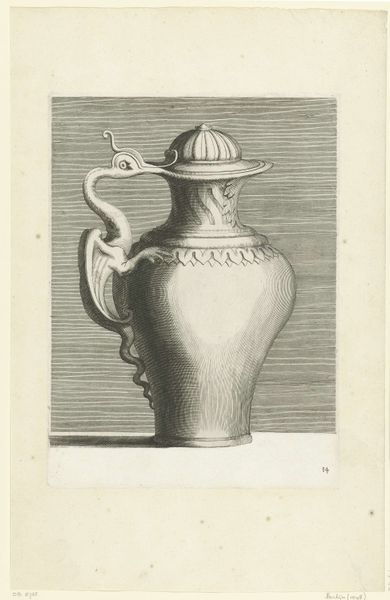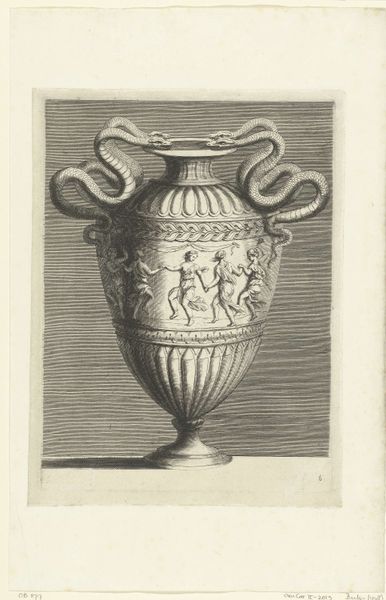
print, engraving
#
baroque
# print
#
geometric
#
line
#
engraving
Dimensions: height 279 mm, width 205 mm
Copyright: Rijks Museum: Open Domain
Curator: Here we have Françoise Bouzonnet’s “Schenkkan met saterhoofd onderaan handvat,” an engraving from 1657. What are your initial thoughts? Editor: Stark. Elegant. It almost feels architectural in its precise lines and carefully modulated gray scales. The subject is classical, but the treatment… clinical, perhaps? Curator: Precisely. The piece embodies many aspects of Baroque printmaking – the use of line to suggest volume, the ornamental flourish. Note, for example, how Bouzonnet uses hatching to create shadow and volume, particularly in the bowl of the ewer. And the satyr's head, a small detail, introduces a moment of mythological drama. Editor: And it is a print, let us remember, produced in a century of extraordinary political and cultural shifts, printed images like this offered the rising bourgeoisie access to luxury items and art styles circulating amongst elite patronage circles. This pitcher then, might be less about utility, and more about displaying status and knowledge. Curator: Indeed. The geometric arrangement creates a sense of order, stability even, that would certainly appeal to patrons of the time. Editor: Although, it also feels a bit... static. It captures the ornate language of wealth but contains none of its attendant chaos or indulgence, an orderly sensibility reigning overall. The backgrounds striations, and overall cool tone contribute to this atmosphere too. Curator: The absence of color definitely contributes. The print demands a different sort of engagement than, say, a painting of the same era might, allowing a viewer to project upon the object its imagined surface quality. Editor: Right, like interpreting a text instead of directly experiencing something sensual. It’s about control – visual control and, I would suggest, a controlling ideology about status, the dissemination of imagery and the importance of linear modes of representation. Curator: It invites speculation about the function of this decorative vessel, considering it apart from its utility. Which perhaps becomes, in itself, the point? Editor: Precisely! It renders material goods available, yet at arm's length, suitable for consumption both visually and socially. Curator: A fine example, in sum, of a historical moment made strikingly present through careful artistic choices. Editor: I agree, even its very formality grants us an insight into the values, of its contemporary viewership and creators.
Comments
No comments
Be the first to comment and join the conversation on the ultimate creative platform.
